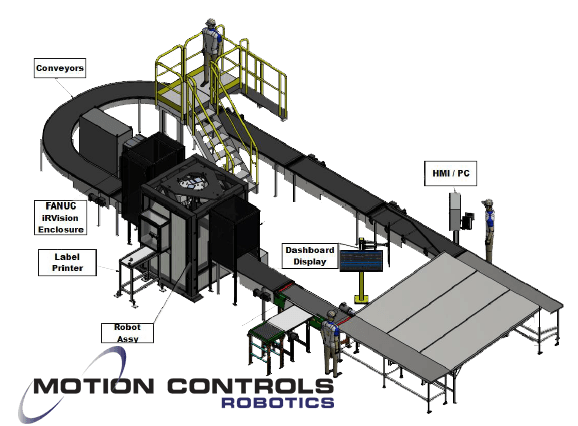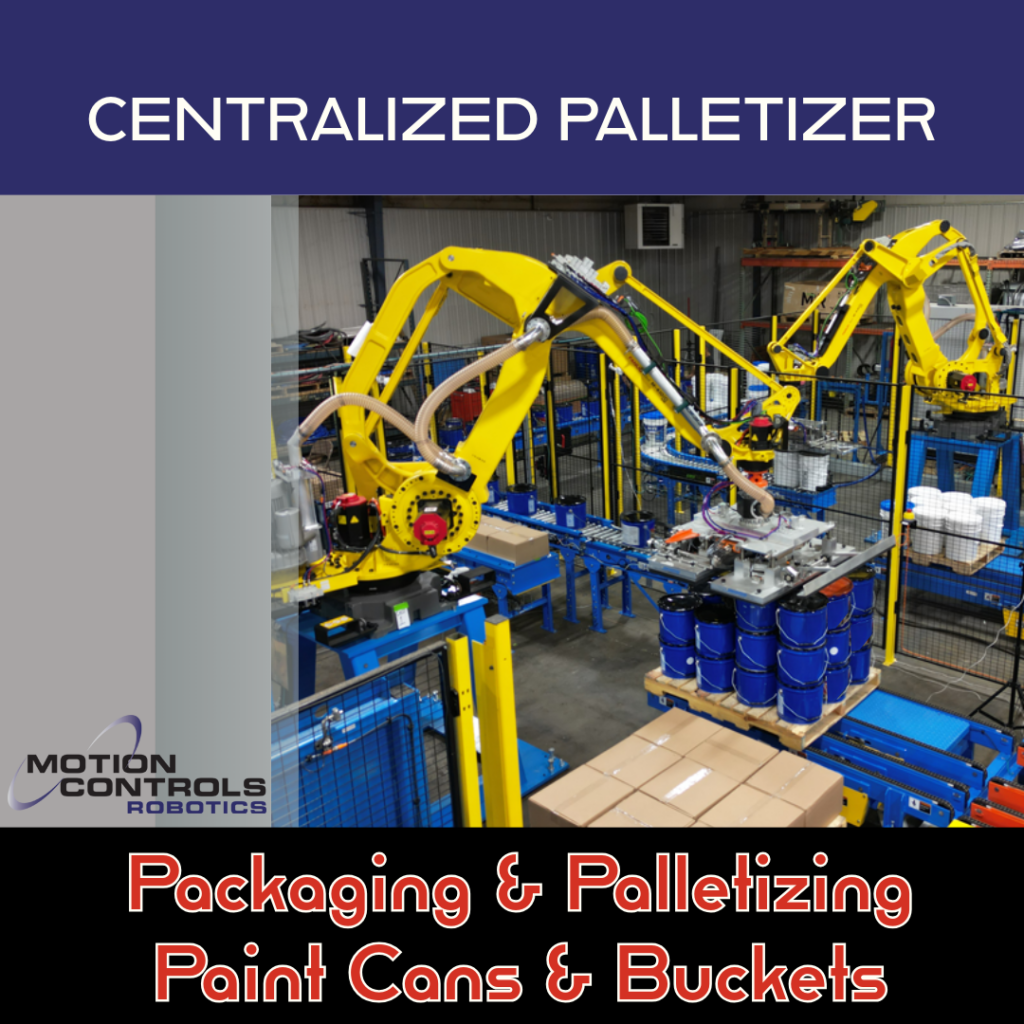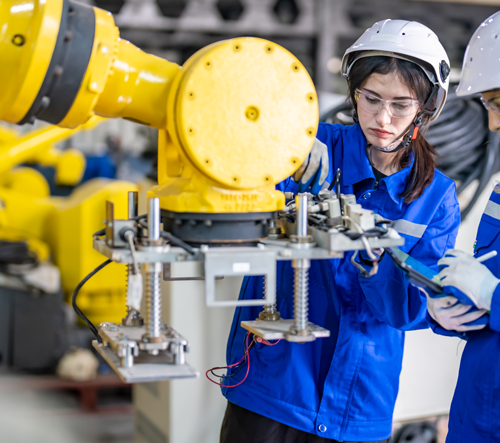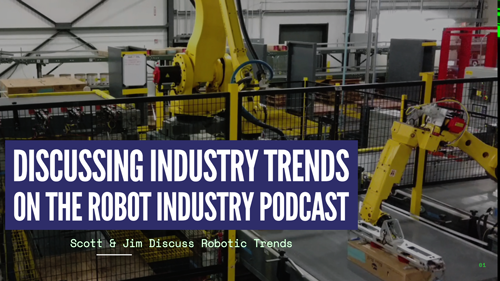
Case Labeling Cell Layout
Innovations in high-speed robotic vision applications have made printing and applying customized labeling efficient and fast. This type of application is perfect for any company where labels need to differ based on a variety of items such as price, weight, product codes, or other characteristics.

Customer Challenges – High-Speed Labeling for Case Labeling
Our customer needed to be able to print and apply custom labels to products at a rate of over 60 parts a minute. They have a very dynamic product mixture with over 5000 SKUs and needed to be able to easily add new products to be labeled as they arrive at their facility.
![]()
Process Sequence – High-Speed Labeling for Case Labeling
We selected to integrate a FANUC M-2iA (M-2iA/3SL) robot to quickly place labels on each package. The conveyors have variable speeds to space product as it moves from the infeed line to the robot.
To address the customer’s need for a large number of SKUs, we developed a program called New Part Introduction (NPI). The operator initiates the NPI process through the HMI by scanning a barcode to introduce the next product to run and entering new SKU product training.
Sequence of Operations for High-Speed Labeling
- Operator manually adjusts conveyor infeed side guides to suit carton size being run.
- The product is scanned for setup information. This information contains the dimensions, including height, of the product.
- A camera locates the carton on the belt for accurate tracking and label placement by the robot.
- The robot adjusts automatically for depth of focus range depending on the product height being run.
- Completed packages begin coming down the conveyor, and using vision, the product is located, and orientation recorded.
- Label is printed, robot picks label from printer, applies the label to the carton. Each label is placed in the exact same location no matter the orientation of the package.
- Post-label application vision inspection performs quality check for placement of label on carton and data on label.
Video shows Case Labeling Cell in action
Robot and End of Arm Tooling
The FANUC M-2iA (M-2iA/3SL) robot quickly places labels on each package as they come down the conveyor. There are several models of the M-2 Delta robot to select from.
Models |
Payload |
Reach |
||
| M-2iA/3A, M-2iA/3AL | 3 kg | 800mm | ||
| M-2iA/3S, M-2iA/3SL | 3 kg | 800mm | ||
| M-2iA/6H, M-2iA/6HL | 6 kg | 800mm |
Other uses for the FANUC M2 Robot
- Packing/packaging
- Assembling
- Sorting
- Inspecting
The end of arm tooling had a spring backing to allow constant pressure on the label after applying to the carton.
Safety Features
Motion Controls Robotics follows the RIA 15.06-2012 Safety Standard designed to make sure employees and robots work safely together. We take full advantage of new technologies and innovations available. This system is complete with safety fencing and sensors.
![]()
Customer Results
Having employees manually apply labels to products at a fast pace can cause repetitive motion injuries and the possibility for quality issues. Having an operator in charge of entering new SKUs and then using vision inspection to ensure accurate label placement drastically reduces these errors and is safer for the employee.
This same labeling system could be developed to label food products both packaged and raw. For example, meat packaging lines where specific labels need to be applied that contain custom information like date, weight, or product codes.
This labeling setup is also perfect for labeling products that are not packaged but need specific label placement.
If you have a similar issue with label application, contact us to find out how using vision and high-speed picking robots can be combined for your best solution.




